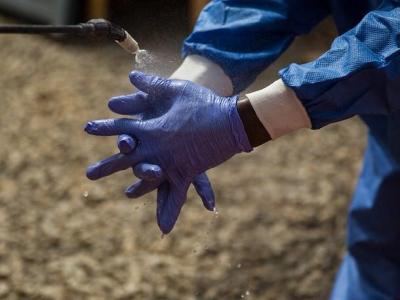Feb 1, 2011 (CIDRAP News) – The US Food and Drug Administration (FDA) says its first round of inspections under new egg safety rules found that 12 of the 35 large farms inspected had problems that required some kind of corrective action, most of them having to do with record-keeping.
The report, posted online today, says that 4% of the environmental samples taken at the 35 farms tested positive for Salmonella Enteritidis (SE), with all of the positive findings coming from one company's farms. The firm subsequently took corrective steps, the FDA said.
The rules, designed to prevent SE in eggs, took effect last July for farms that have 50,000 or more laying hens, a category that accounts for about 80% of US egg production. Smaller farms (between 3,000 and 50,000 layers) will be subject to the rules in 2 years, unless they use pasteurization or other treatments to reduce pathogens.
The FDA said it plans to inspect all 600 farms now subject to the safety rule by January 2012. For the first inspections, the agency chose 35 farms that had been linked to previous outbreaks or had a poor compliance history. The farms represent nine companies and are located in six states: Ohio, Maine, Pennsylvania, Washington, South Carolina, and Utah.
From three to five inspectors visited each farm, the FDA report says. They took 1,796 environmental samples, of which 76 (4%) were positive, all of them from one company's operations. The FDA said it conducted follow-up inspections of those farms and confirmed that corrective steps, including egg testing, had been taken.
All the farms had SE prevention plans, plans to control rodents and other pests, and biosecurity plans, as required by the egg safety rules, according to the report.
After the inspections, 12 of the 35 farms were classified as "voluntary action needed," while 11 farms were classified as needing no action. The classifications are still pending for the other 12 farms, because completion of the inspection reports was delayed when the inspectors in Washington state had to help investigate disease outbreaks linked to sprouts and cheese.
Most of the citations on the FDA inspection reports have to do with record-keeping lapses, the agency said. They included such items as failure to record when certain activities took place, failure to document compliance with biosecuirity measures, and failure to provide records on controlling rodents and other pests.
In other categories, the inspector found some failures to, among other things:
- Adequately control rodent activity at one poultry house
- Prevent stray animals from entering poultry houses
- Maintain eggs intended for the table market at 45°F or below
- Maintain practices to prevent cross-contamination when workers moved between poultry houses
The Form 483 reports detailing the findings will be posted online, possibly this week, FDA spokesman Sebastian Cianci told CIDRAP News.
Officials said the rest of the farms awaiting inspection are being ranked by criteria that include compliance history, number of laying hens, and participation in state egg safety programs.
The FDA's inspections of large egg farms were launched as the agency was investigating a nationwide SE outbreak linked to two large egg producers in Iowa. The outbreak, which came to light in August, caused Quality Egg of Galt, Iowa, and Hillandale Farms of West Hampton, Iowa, to recall 550 million eggs. The Centers for Disease Control and Prevention estimated in October that 1,813 SE cases were part of the outbreak.
See also:
FDA egg-farm inspection report
Sep 30, 2010, CIDRAP News brief on delay in launch of egg farm inspections
Jul 9, 2010, CIDRAP News story "Rules to limit Salmonella in eggs take effect"
















